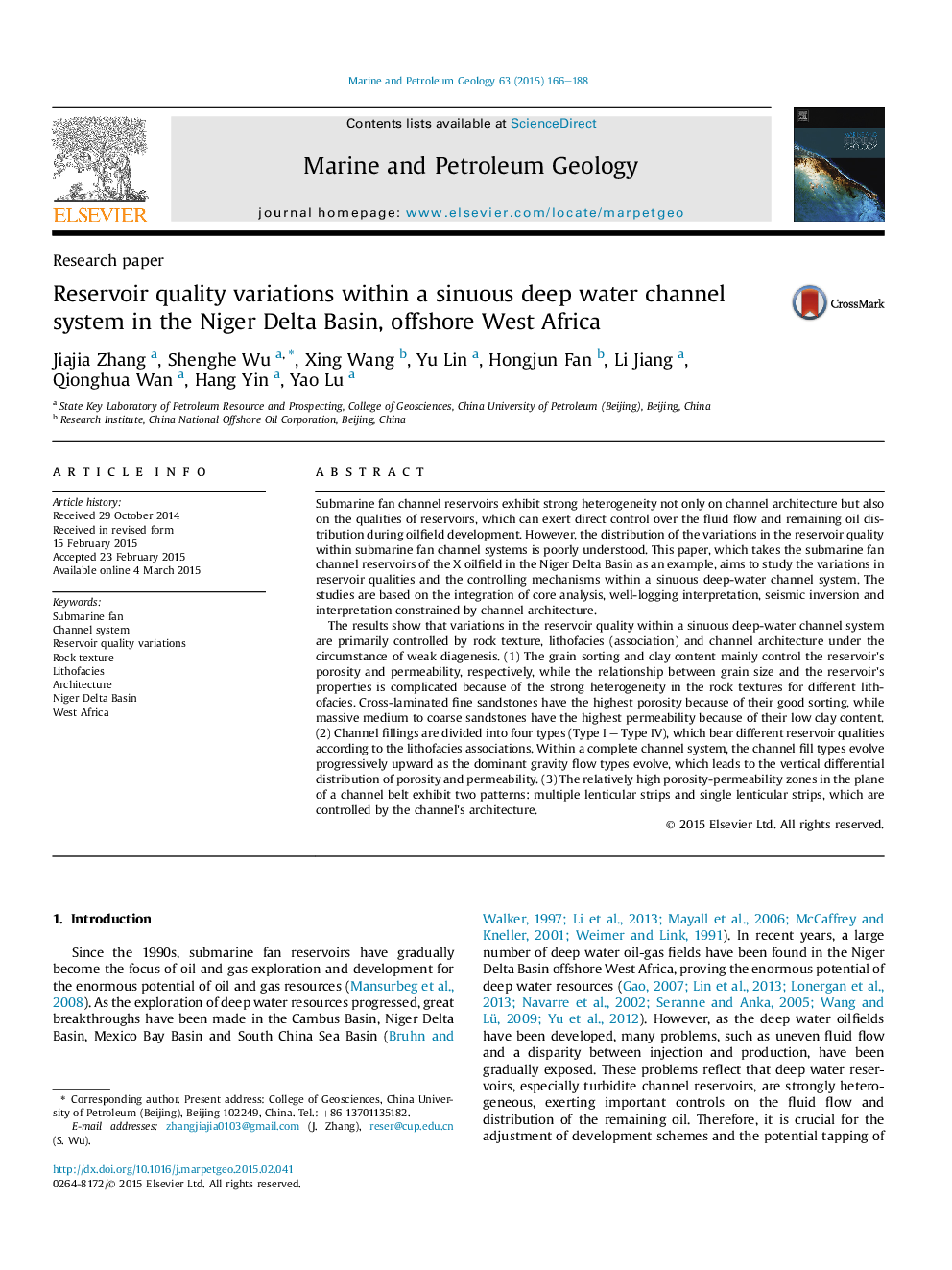| کد مقاله | کد نشریه | سال انتشار | مقاله انگلیسی | نسخه تمام متن |
|---|---|---|---|---|
| 6435205 | 1637162 | 2015 | 23 صفحه PDF | دانلود رایگان |
- Reservoir quality differs greatly in space within a deep water channel system.
- Porosity and permeability are controlled by sorting and clay content respectively.
- Different lithofacies show large variations in rock texture and reservoir quality.
- Distribution of channel-fill types cause vertical variations in reservoir quality.
- Complicated channel architecture results in planar variations in reservoir quality.
Submarine fan channel reservoirs exhibit strong heterogeneity not only on channel architecture but also on the qualities of reservoirs, which can exert direct control over the fluid flow and remaining oil distribution during oilfield development. However, the distribution of the variations in the reservoir quality within submarine fan channel systems is poorly understood. This paper, which takes the submarine fan channel reservoirs of the X oilfield in the Niger Delta Basin as an example, aims to study the variations in reservoir qualities and the controlling mechanisms within a sinuous deep-water channel system. The studies are based on the integration of core analysis, well-logging interpretation, seismic inversion and interpretation constrained by channel architecture.The results show that variations in the reservoir quality within a sinuous deep-water channel system are primarily controlled by rock texture, lithofacies (association) and channel architecture under the circumstance of weak diagenesis. (1) The grain sorting and clay content mainly control the reservoir's porosity and permeability, respectively, while the relationship between grain size and the reservoir's properties is complicated because of the strong heterogeneity in the rock textures for different lithofacies. Cross-laminated fine sandstones have the highest porosity because of their good sorting, while massive medium to coarse sandstones have the highest permeability because of their low clay content. (2) Channel fillings are divided into four types (Type IÂ -Â Type IV), which bear different reservoir qualities according to the lithofacies associations. Within a complete channel system, the channel fill types evolve progressively upward as the dominant gravity flow types evolve, which leads to the vertical differential distribution of porosity and permeability. (3) The relatively high porosity-permeability zones in the plane of a channel belt exhibit two patterns: multiple lenticular strips and single lenticular strips, which are controlled by the channel's architecture.
Journal: Marine and Petroleum Geology - Volume 63, May 2015, Pages 166-188
